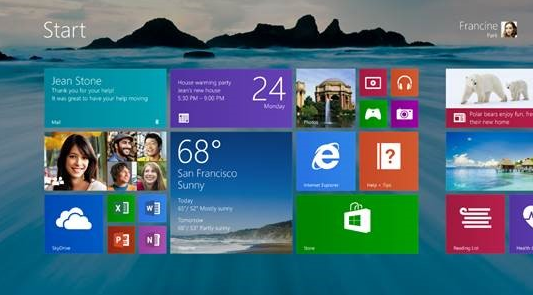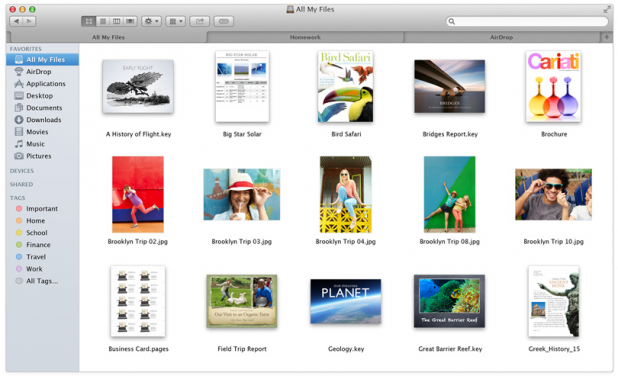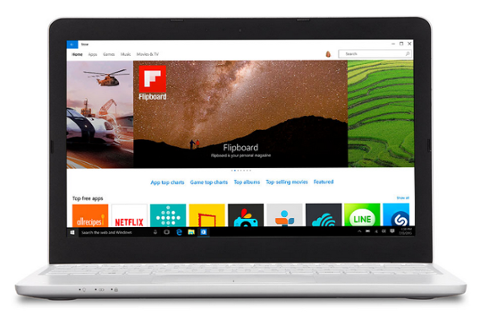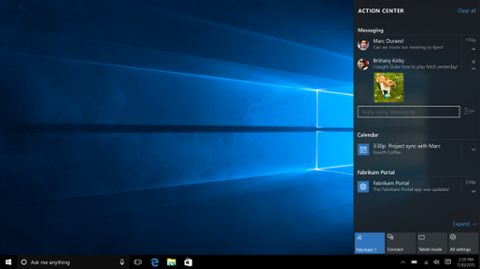[caption id="attachment_13379" align="aligncenter" width="533"]

Windows 8.1.[/caption] It’s been a busy October for operating systems, with Microsoft’s Windows 8.1 squaring off against Apple’s Mac OS X “Mavericks.” How do the two operating systems compare?
Windows 8.1 is largely a response to user complaints about Windows 8, reintroducing several features such as the Start button, which had gone missing from the original version of the software. The update also includes the ability to bypass the Start screen and boot directly to the desktop, which is another feature that many power users wanted. While Microsoft is touting the Start screen and its colorful tiles as ideal for tablets, Windows traditionalists—and there are a lot of them out there, particularly in the business community—wanted their familiar desktop front and center. Windows 8.1 is free for anyone who already purchased a copy of Windows 8. Windows 8 is Microsoft’s attempt to develop an operating system that works with equal facility on traditional PCs and mobile touch-screens. By building a dual interface—users can jump to the desktop from the Start screen by tapping a particular tile—Microsoft hopes that it can gain significant market-share in tablets while maintaining Windows’ longtime dominance of the desktop-and-PC arena. But so far, Windows 8 hasn’t made that much of an impression, despite Microsoft’s heavy marketing push: the software owns 8.02 percent of the worldwide market for operating systems,
according to Net Applications, lagging behind Windows XP at 31.42 percent and Windows 7 at 46.39 percent.
Mavericks
[caption id="attachment_13378" align="aligncenter" width="618"]

Mavericks' updated tabs.[/caption] On a cosmetic level, Apple’s OS X “Mavericks” largely resembles its immediate predecessor. There’s the familiar desktop (albeit with some font changes) paired with the same functionality; unlike Windows 8, there’s little here that’s unfamiliar, or requires a learning curve. In its continuing quest to converge its mobile and PC operating systems, Apple has ported over a few elements from iOS to OS X, including the Maps app and some of the “flat” design aesthetic that defines the new iOS 7. There’s enhanced support for multiple displays, tabs in the finder, and more efficient use of system resources. In other words, it’s a fairly extensive upgrade, but not a radical overhaul. It's also free to download. Unlike Microsoft, Apple already enjoys a substantial presence in the mobile arena; there’s no need for it to alter Mac OS X to play on multiple devices across the hardware ecosystem. That’s not to say that iOS and Mac OS won’t merge at some point in the far future; but until then, the company seems content with introducing iOS-birthed features into Mac OS when appropriate, but otherwise leaving the broader elements of the latter relatively untouched.
Too Far, Too Fast
Microsoft, on the other hand, needs to make big plays in mobile right now, while defending its core Windows franchise. Those overarching goals are what led to Windows 8’s “unique” interface; the adjustments in Windows 8.1, most notably the modified Start button, suggests the company’s executives know they went a little too far, too fast, in their mad scramble toward mobility. The question remains whether that will hurt Microsoft in the longer term.
Images: Microsoft, Apple  Windows 8.1.[/caption] It’s been a busy October for operating systems, with Microsoft’s Windows 8.1 squaring off against Apple’s Mac OS X “Mavericks.” How do the two operating systems compare? Windows 8.1 is largely a response to user complaints about Windows 8, reintroducing several features such as the Start button, which had gone missing from the original version of the software. The update also includes the ability to bypass the Start screen and boot directly to the desktop, which is another feature that many power users wanted. While Microsoft is touting the Start screen and its colorful tiles as ideal for tablets, Windows traditionalists—and there are a lot of them out there, particularly in the business community—wanted their familiar desktop front and center. Windows 8.1 is free for anyone who already purchased a copy of Windows 8. Windows 8 is Microsoft’s attempt to develop an operating system that works with equal facility on traditional PCs and mobile touch-screens. By building a dual interface—users can jump to the desktop from the Start screen by tapping a particular tile—Microsoft hopes that it can gain significant market-share in tablets while maintaining Windows’ longtime dominance of the desktop-and-PC arena. But so far, Windows 8 hasn’t made that much of an impression, despite Microsoft’s heavy marketing push: the software owns 8.02 percent of the worldwide market for operating systems, according to Net Applications, lagging behind Windows XP at 31.42 percent and Windows 7 at 46.39 percent.
Windows 8.1.[/caption] It’s been a busy October for operating systems, with Microsoft’s Windows 8.1 squaring off against Apple’s Mac OS X “Mavericks.” How do the two operating systems compare? Windows 8.1 is largely a response to user complaints about Windows 8, reintroducing several features such as the Start button, which had gone missing from the original version of the software. The update also includes the ability to bypass the Start screen and boot directly to the desktop, which is another feature that many power users wanted. While Microsoft is touting the Start screen and its colorful tiles as ideal for tablets, Windows traditionalists—and there are a lot of them out there, particularly in the business community—wanted their familiar desktop front and center. Windows 8.1 is free for anyone who already purchased a copy of Windows 8. Windows 8 is Microsoft’s attempt to develop an operating system that works with equal facility on traditional PCs and mobile touch-screens. By building a dual interface—users can jump to the desktop from the Start screen by tapping a particular tile—Microsoft hopes that it can gain significant market-share in tablets while maintaining Windows’ longtime dominance of the desktop-and-PC arena. But so far, Windows 8 hasn’t made that much of an impression, despite Microsoft’s heavy marketing push: the software owns 8.02 percent of the worldwide market for operating systems, according to Net Applications, lagging behind Windows XP at 31.42 percent and Windows 7 at 46.39 percent.
 Mavericks' updated tabs.[/caption] On a cosmetic level, Apple’s OS X “Mavericks” largely resembles its immediate predecessor. There’s the familiar desktop (albeit with some font changes) paired with the same functionality; unlike Windows 8, there’s little here that’s unfamiliar, or requires a learning curve. In its continuing quest to converge its mobile and PC operating systems, Apple has ported over a few elements from iOS to OS X, including the Maps app and some of the “flat” design aesthetic that defines the new iOS 7. There’s enhanced support for multiple displays, tabs in the finder, and more efficient use of system resources. In other words, it’s a fairly extensive upgrade, but not a radical overhaul. It's also free to download. Unlike Microsoft, Apple already enjoys a substantial presence in the mobile arena; there’s no need for it to alter Mac OS X to play on multiple devices across the hardware ecosystem. That’s not to say that iOS and Mac OS won’t merge at some point in the far future; but until then, the company seems content with introducing iOS-birthed features into Mac OS when appropriate, but otherwise leaving the broader elements of the latter relatively untouched.
Mavericks' updated tabs.[/caption] On a cosmetic level, Apple’s OS X “Mavericks” largely resembles its immediate predecessor. There’s the familiar desktop (albeit with some font changes) paired with the same functionality; unlike Windows 8, there’s little here that’s unfamiliar, or requires a learning curve. In its continuing quest to converge its mobile and PC operating systems, Apple has ported over a few elements from iOS to OS X, including the Maps app and some of the “flat” design aesthetic that defines the new iOS 7. There’s enhanced support for multiple displays, tabs in the finder, and more efficient use of system resources. In other words, it’s a fairly extensive upgrade, but not a radical overhaul. It's also free to download. Unlike Microsoft, Apple already enjoys a substantial presence in the mobile arena; there’s no need for it to alter Mac OS X to play on multiple devices across the hardware ecosystem. That’s not to say that iOS and Mac OS won’t merge at some point in the far future; but until then, the company seems content with introducing iOS-birthed features into Mac OS when appropriate, but otherwise leaving the broader elements of the latter relatively untouched.

